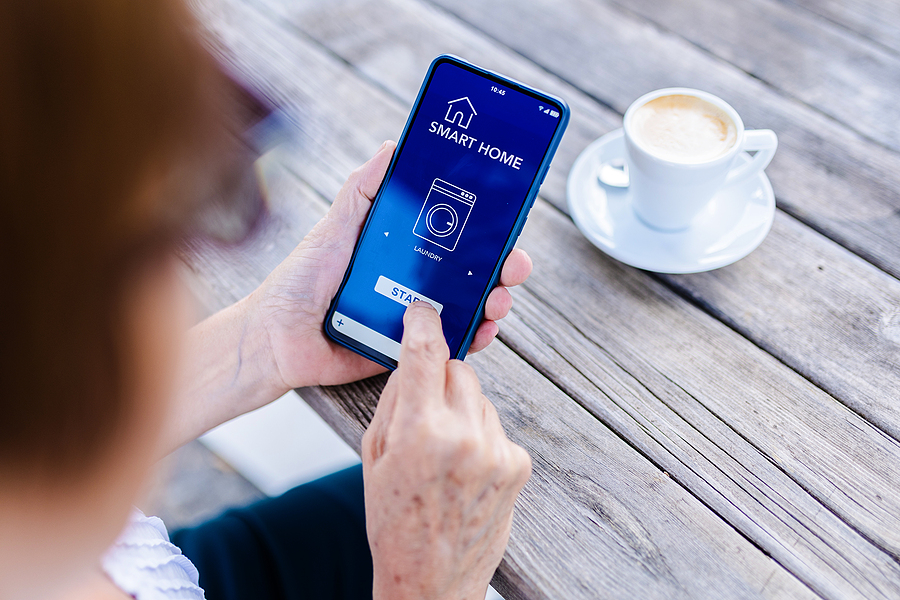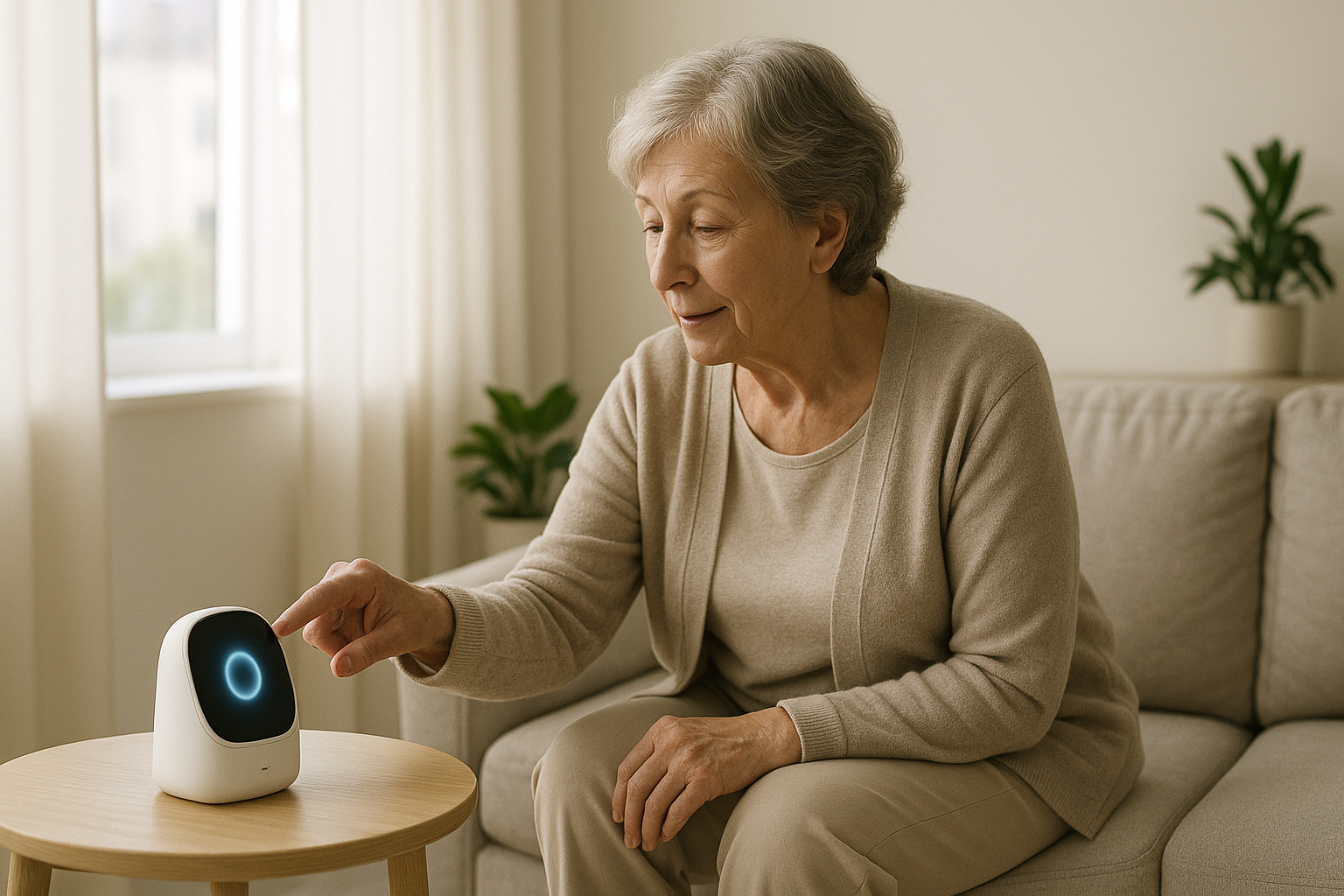The Role of Smart Home Technology in Aging in Place
Aging in place is the concept of living safely, independently, and comfortably in one’s own home and community for as long as possible, regardless of age, income, or ability level[2]. This preference is shared by a growing number of older adults who wish to remain in their familiar surroundings, preserving their independence and enhancing their quality of life[2][6]. Smart home technologies are essential tools that support this goal by offering innovative solutions for health monitoring, emergency response, and home automation[2]. These technologies, defined as an integration of Internet-enabled digital devices with sensors and machine learning, can acquire and apply knowledge about the physical environment and its inhabitants to improve their experience[13]. By assisting with daily activities, from medication management to fall detection, AI-powered systems enable older adults to live independently for longer[7].
Key Technologies and Sensors for Senior Care

A range of smart devices and sensors are designed to enhance safety, health, and independence for older adults aging in place.
Fall Detection
Falls represent a significant threat to the health and independence of adults 65 and older[3]. Fall detection systems are classified as either wearable or non-wearable[3]. Wearable devices include smartwatches like the Apple Watch SE, which has built-in fall detection, and emergency pendants[8][21]. Non-wearable systems use devices embedded in the home, such as cameras, motion sensors, microphones, and floor sensors, to detect falls without requiring the user to wear anything[3]. A major challenge is the lack of real-world testing; most studies rely on falls simulated by young, healthy volunteers, which may not accurately reflect the circumstances of a real fall experienced by an older adult[3][14].
Health and Activity Monitoring
Smart health monitoring devices track vital signs, physical activity, and medication adherence, helping with the early detection of health issues and the management of chronic conditions[2][13]. Unobtrusive sensors, such as motion, contact, and light sensors, can monitor Activities of Daily Living (ADL), providing insights into routines related to sleep, meals, and mobility without being invasive[1][13]. This data can help detect changes in behavior that may signal a health issue[1].
Medication Management and Home Automation
Automated medication dispensers can audibly notify an older adult when it's time to take their medicine and record the exact time of intake in an app for family members or caregivers to review[6]. These systems can also alert a pharmacy when a refill is needed. Broader home automation systems, often controlled by voice assistants like Amazon Alexa, enhance comfort and safety[1][8]. This includes smart locks that eliminate the need for keys, smart lighting, and doorbell cameras that allow residents to screen visitors remotely[8][19]. Energy management systems with smart thermostats can also optimize energy consumption by learning user patterns and adjusting settings automatically[1].
Ethical Design for Autonomy and Trust
The integration of smart technology into the home raises significant ethical challenges that must be addressed to ensure user trust and well-being.
Privacy and Data Security
Privacy is a primary ethical concern, as smart home technologies collect extensive sensitive data within deeply personal spaces[1][4]. Researchers often distinguish between 'informational privacy' (avoiding misuse of data) and 'physical privacy' (avoiding unwanted sensory access, like being watched)[9]. While developers focus on the more tractable problem of data security through encryption and secure networks, end-users may have more visceral concerns about physical privacy that are harder to address[9]. Users often face 'all-in or all-out decisions' with no choice but to accept broad data collection to use a device[12]. This necessitates robust data protection mechanisms, clear policies on data use, and transparent consent processes that give users genuine control[1][23].
Autonomy and User Control
Smart home technologies should enhance, rather than diminish, a user's autonomy and decision-making capabilities[1][4]. Systems should be designed to assist users while allowing them to intervene and retain final control over decisions[1]. While developers often see providing choices to end-users as a solution to ethical dilemmas, these choices are often constrained by the initial design, which embeds the researchers' own ethical standpoints[9].
Bias, Transparency, and Explainability
AI algorithms are prone to perpetuating biases if trained on imbalanced datasets, which can lead to discriminatory outcomes[1]. To ensure fairness, developers must use diverse datasets and regularly audit algorithms for bias[1]. Transparency and explainability are also essential for building user trust[1]. Users need to understand what data is being collected and the rationale behind an AI system's decisions, a concept known as Explainable AI (XAI)[1].
Usability and Social Acceptance
Significant barriers to adoption exist, including cost, usability issues, and social stigma[22]. Older adults may be hesitant to integrate technology due to a need for more instruction, concerns about how data is gathered, and a preference for gradual adoption[6]. Some also resist wearing devices due to the stigma associated with them, feeling that it 'makes them feel old'[8]. There is also a fear that technology could replace, rather than complement, human interaction and care[1][15].
The Path Forward: Responsible Innovation in Smart Home Care
When used appropriately, smart home technology has the potential to improve quality of life and maintain safety for older adults, supporting their desire to age in place[4]. However, realizing this potential requires a proactive and collaborative approach to ethical design[23]. The ability to respond to ethical concerns like privacy, autonomy, and usability will be critical to the future development and application of these technologies[4]. Effectively addressing these challenges demands an interdisciplinary approach where researchers, policymakers, industry leaders, and ethicists work together[1]. This collaboration is necessary to establish guidelines that safeguard individual rights, promote inclusivity, and foster responsible innovation[1]. By decoupling concepts like choice and privacy, the duty to protect users can be placed more firmly with researchers and developers, ensuring that systems are both technologically and ethically robust[9]. Ultimately, a user-centered design that empowers individuals and respects their values is fundamental to creating smarter, safer, and more equitable smart home ecosystems[1].
Get more accurate answers with Super Pandi, upload files, personalized discovery feed, save searches and contribute to the PandiPedia.
Let's look at alternatives:
- Modify the query.
- Start a new thread.
- Remove sources (if manually added).





